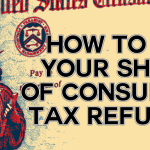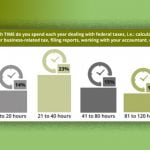
When you acquire an asset for your business that is expected to last for more than a year, you usually have to capitalize the cost. This means you put the asset on your balance sheet and then write off the cost over a certain number of years (fixed by law according to the nature of the item) by taking an annual depreciation allowance.
This capitalization rule applies regardless of the cost of an item. So technically, if you buy a $10 handheld calculator, you can’t automatically deduct the cost off the bat because the item is expected to last more than a year. However, there are several ways to accelerate your tax write-offs for most asset purchases.
Section 179 Deduction
Instead of taking depreciation allowances for five years or more, you can elect to deduct the cost of equipment and machinery in the year you buy them and place them in service. The dollar limit for this expensing rule (called the Section 179 deduction after the part of the Internal Revenue Code describing it) is $500,000 for 2015 and 2016. The dollar limit may be increased for inflation for 2017 and beyond.
However, the $500,000 is reduced dollar-for-dollar for each dollar of equipment bought in the year that exceeds another set limit: $2,000,000 in 2015 and $2,010,000 in 2016. Thus, if you bought $2.1 million of equipment in 2015, your expensing limit is $400,000 [$500,000 – ($100,000 over the $2 million acquisition limit)]. Again, the $2,010,000 may be adjusted for inflation after 2016.
Expensing applies to both new and pre-owned items, but is only beneficial for a business that is profitable for the year. In other words, expensing cannot be used to create or increase a net operating loss for the year. In addition to office furniture, laptops, cell phones, machinery and other equipment, expensing can be used for:
- Off-the-shelf software.
- Air conditioning and heating units, but only those placed into service after 2015.
- Qualified leasehold, restaurant, and retail improvements up to $250,000 in 2015.
Starting in 2016, expensing goes up to $500,000. The $250,000 no longer applies.
Bonus Depreciation
Bonus depreciation is another of the first-year tax write-off options. While it’s called a bonus, it does not add to the overall deductions for a purchase; you cannot deduct more than the cost of the item.
Bonus depreciation merely allows you to accelerate depreciation deductions. You can deduct 50 percent of the cost of items placed in service for the year. The 50 percent limit applies for 2015, 2016, and 2017. It drops to 40 percent in 2018 and to 30 percent in 2019. Bonus depreciation is scheduled to expire after 2019 unless Congress again extends this rule.
Bonus depreciation applies only to new items. It cannot be used for pre-owned items. For 2015, bonus depreciation can be used not only for machinery and equipment, but also for qualified leasehold improvements. It cannot be used for restaurant or retail property improvements, however. Starting in 2016, bonus depreciation applies to all qualified improvements made to the interior of commercial space (other than enlargements, changes to the internal structural framework, elevators, or escalators). There is no longer a requirement that there be a three-year lease.
For very expensive items, bonus depreciation can be combined with the Section 179 deduction as well as regular depreciation. This means even when buying high-ticket items, you likely will be able to write off all or at least most of the cost up front.
Find more information about these tax write-offs in the IRS Publication 946, How to Depreciate Property (PDF).
De Minimis Safe Harbor
Remember that calculator mentioned earlier? You can choose to apply the Section 179 deduction. Or you can rely on an IRS-created de minimis safe harbor for tangible property (PDF). Instead of capitalizing the cost and then using expensing or depreciation to write off the cost of items, you can choose to treat them as material and supplies. This safe harbor allows you to take an immediate deduction for the cost of acquisitions but you can’t add them to your balance sheet.
The de minimis safe harbor is limited in 2015 to $500 per item or invoice (clearly enough to cover the handheld calculator). In 2016, the limit is $2,500 per item or invoice.
To use this safe harbor tax write-off method, you must attach an election statement to your return. You must make the election each year that you want to use it.
Bottom Line
You have options on how to write-off items you buy for your business. The way in which you pay for the items does not impact your tax write-offs. Thus, if you charged the purchase to a credit card, arranged for vendor financing of an equipment purchase, or paid cash, the write-off turns on when you bought it, not how you paid for it.
Work with a tax advisor to figure out the best strategy for your situation.
[“source-smallbiztrends”]




